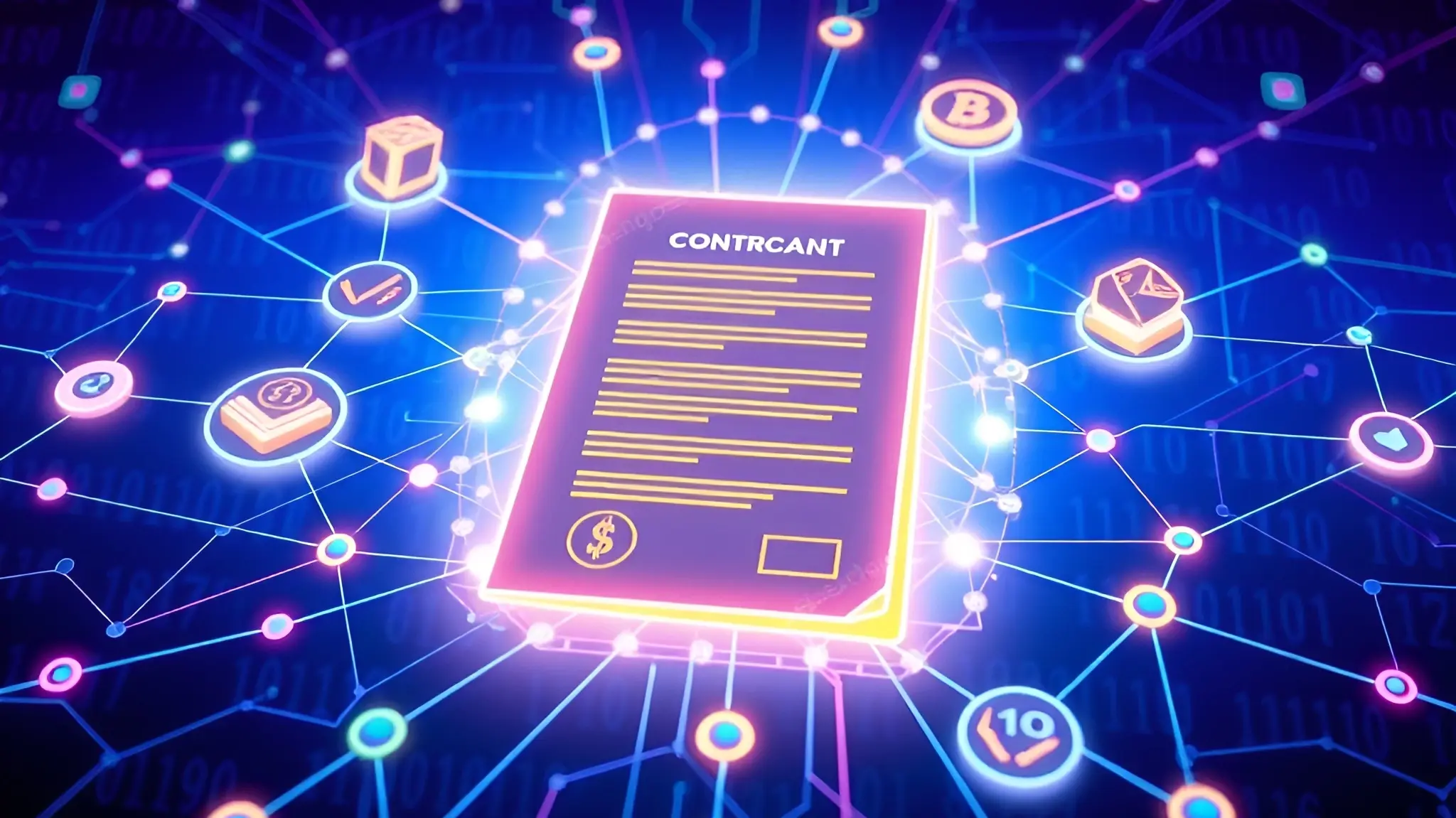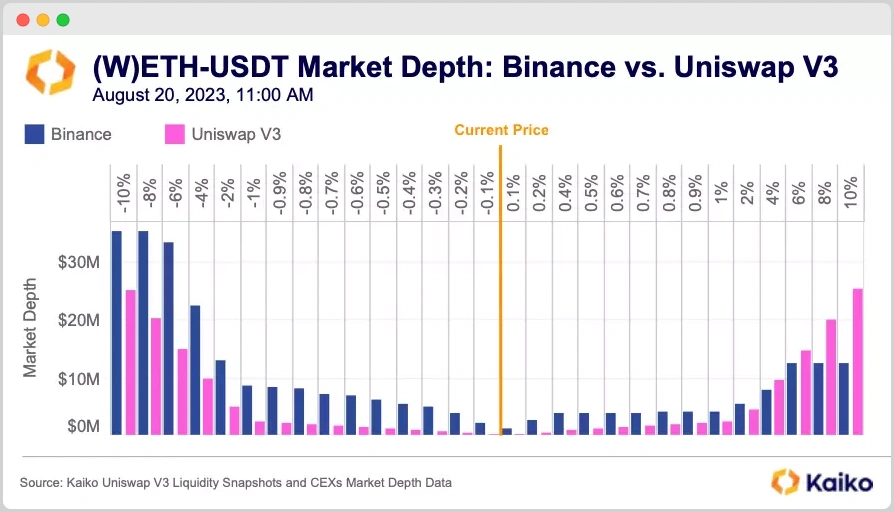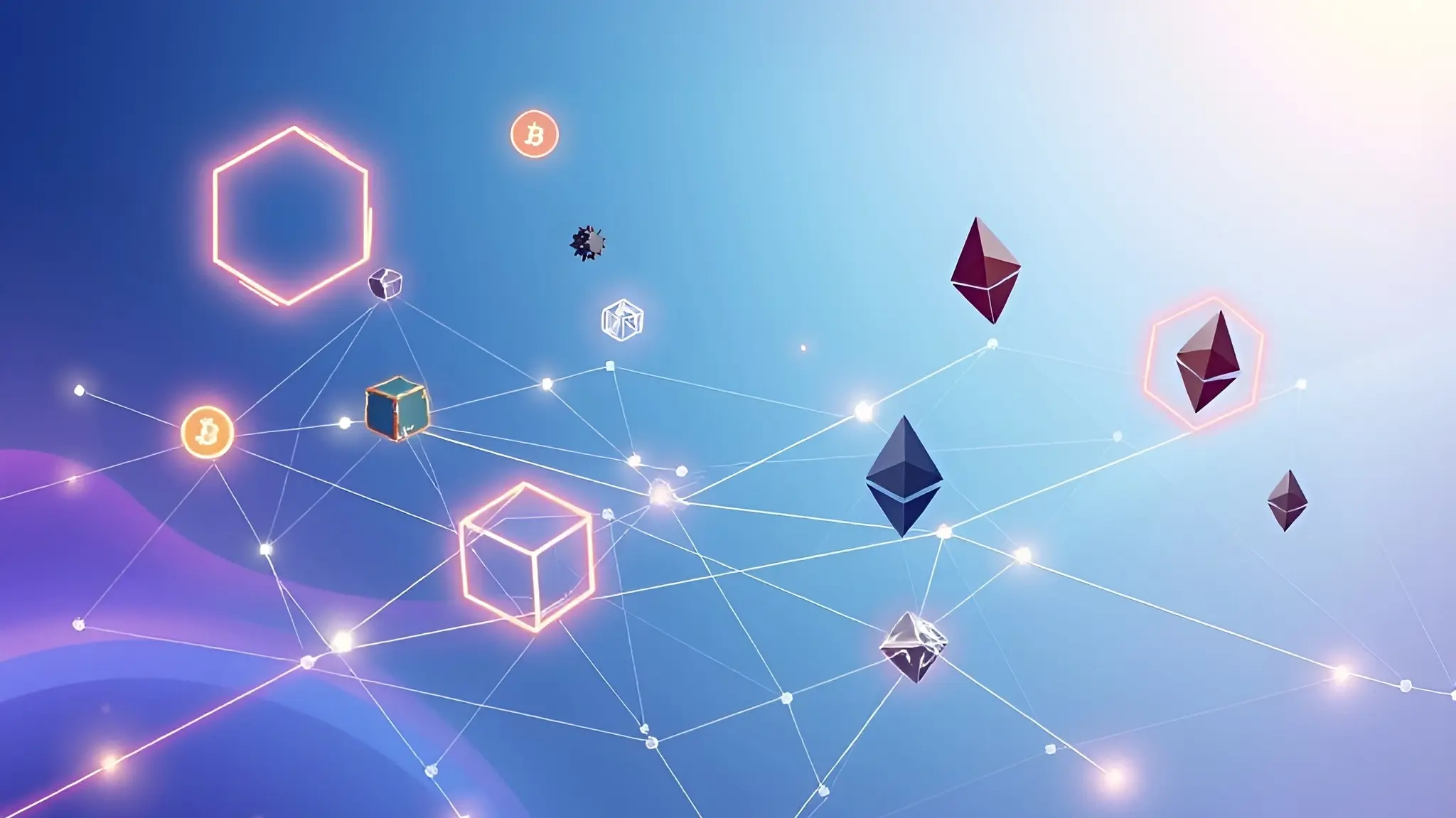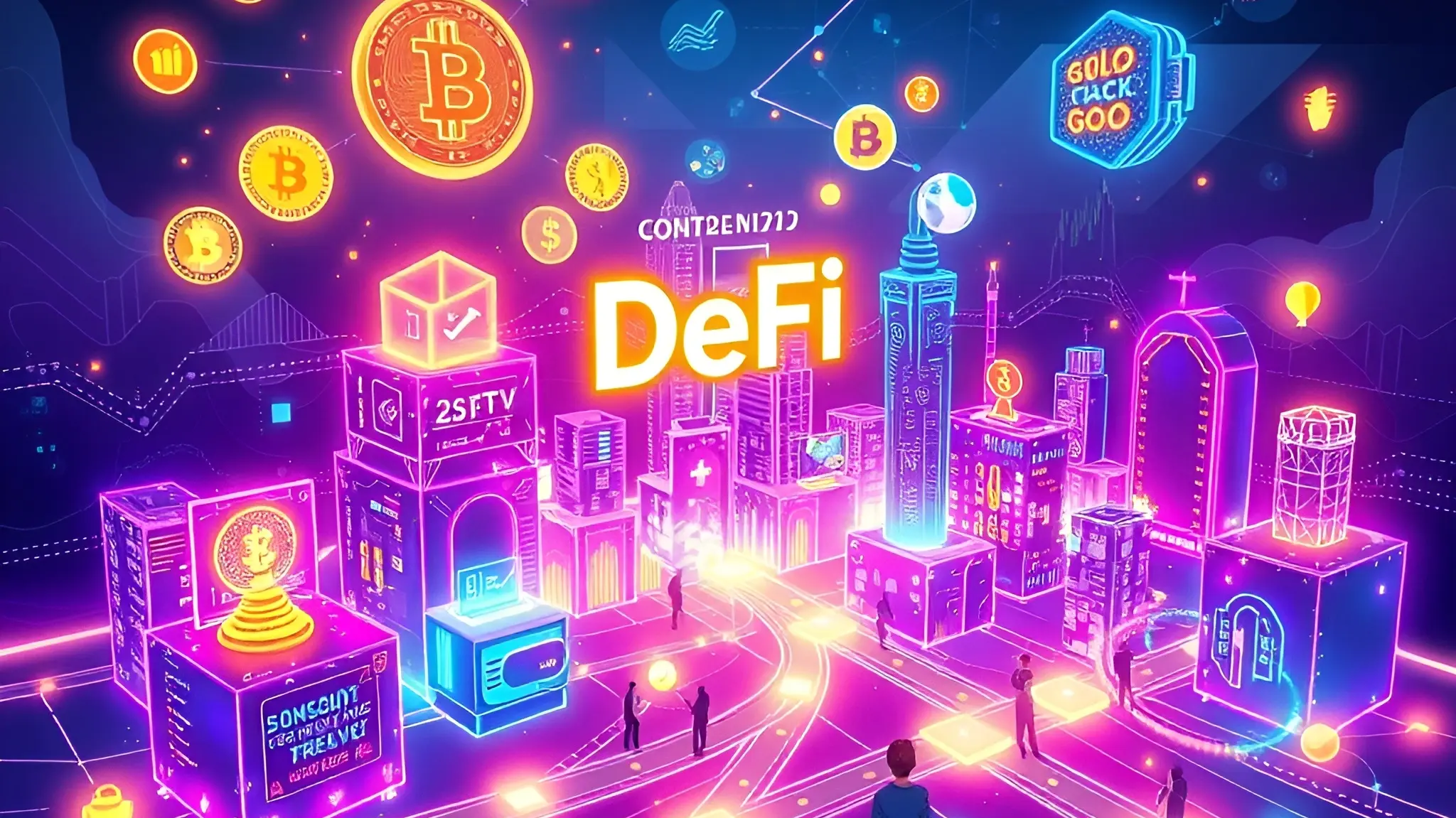What Is Defi (Decentralized Finance)?
Decentralized Finance (often shortened to DeFi) is an emerging financial system built on blockchain technology.
It allows people to trade, borrow, and lend money directly with each other without relying on traditional banks or other middlemen. This approach makes financial services more accessible and can reduce fees.
In 2021, the total value locked (TVL) in DeFi platforms went beyond $100 billion, showing how quickly it has been catching on.
Key Takeaways:
ShowDefinition of DeFi
Traditional financial systems often have high costs and require specific documentation or location requirements.
By contrast, Decentralized Finance (DeFi) uses blockchain networks to create an open, permissionless ecosystem. Anyone with an internet connection can participate.
- Peer-to-peer (P2P) Services: Individuals can lend or borrow directly from each other.
- Cost Reduction: Fewer intermediaries can result in lower fees.
- Security: Robust auditing and code reviews help reduce the risk of hacks or errors.
Because DeFi makes finance accessible to more people, it’s important for anyone interested in new financial solutions or security innovations to understand how it works.
1. How DeFi Works
DeFi relies on blockchain networks (often Ethereum) to enable direct transactions between users.
Smart contracts carry out these transactions, ensuring they happen exactly as programmed. Key points:
- Financial Autonomy: You control your funds directly through digital wallets.
- Global Accessibility: All you need is internet access and a compatible wallet.
- Enhanced Security: Cryptographic technology helps protect transactions.
- Potential for Higher Returns: Some platforms offer attractive interest rates or rewards for providing liquidity.
Understanding these basics is important for anyone looking to explore DeFi while keeping an eye on safety and risk management.
2. Key Components of DeFi

- Smart Contracts: These are programs that execute automatically when certain conditions are met. They remove the need for a “middleman,” reducing counterparty risk.
- Decentralized Applications (dApps): dApps are user-friendly interfaces that interact with smart contracts. They allow people to lend, borrow, or trade cryptocurrencies in a few clicks.
- Liquidity Pools: In a liquidity pool, users deposit their cryptocurrencies to facilitate trading. In return, they often earn rewards or a share of transaction fees.
- Stablecoins: These are cryptocurrencies pegged to a stable asset (like the US dollar), which helps manage price swings in the crypto market.
- Governance Tokens: Some DeFi platforms issue tokens that let holders vote on proposed changes. This gives the community a say in how the platform evolves.
Benefits of Decentralized Finance
1. Financial Inclusivity
Traditional banks can be out of reach for many people due to strict requirements or high fees. DeFi breaks down these barriers:
- Direct Ownership: You control your own assets.
- Easy Access to Loans: Borrow or lend without lengthy approval processes.
- Lower Fees: Fewer intermediaries often mean reduced costs.
- Room for Innovation: New ideas can be tested quickly in a more open environment.
Since around 1.7 billion adults worldwide are still “unbanked,” DeFi could be a major step toward giving more people access to financial tools and markets.
2. Enhanced Security Features
DeFi uses blockchain technology with strong encryption to protect data. Key security advantages include:
- Real-time Auditing: Transactions can be monitored publicly.
- No Single Point of Failure: Decentralized systems are harder to take down.
- Multi-signature Wallets: Transactions can require multiple approvals, adding a layer of safety.
These measures help users feel more confident about their funds and data.
3. Lower Transaction Costs
Banks and other financial institutions often charge a range of fees. DeFi, by cutting out these intermediaries, can reduce costs significantly:
- Savings for Individuals and Small Businesses
- Greater Market Liquidity (more funds available for trading and lending)
- More Trust Through Transparency
As a result, DeFi platforms become attractive to people looking for simpler, cheaper financial services.
Risks and Challenges
1. Smart Contract Vulnerabilities
Smart contracts can have coding errors or loopholes. If hackers find these flaws, they could steal funds. Some common issues include:
- Insufficient Testing leading to security gaps
- Over-reliance on External Data (Oracles) that can be manipulated
- Poor Coding Practices that create potential backdoors
Routine audits and best coding practices are critical to keep DeFi platforms safe.
2. Market Volatility Risks
Cryptocurrencies can see large price swings in short periods. When prices drop quickly:
- Collateral in Loans can lose value, causing forced liquidations.
- Trading Volumes Surge, leading to network congestion and slow transactions.
- Investor Confidence can suffer if losses mount rapidly.
Effective risk management is crucial for anyone using these platforms.
3. Regulatory Uncertainty
Governments around the world are still deciding how to regulate DeFi. This uncertainty causes:
- Potential for Sudden Legal Crackdowns
- Complex Compliance Requirements for platforms and developers
- Limited Access in places with strict laws
Clear guidelines from regulators could help DeFi grow by making it safer for both users and developers.
Popular DeFi Applications

Below are three well-known DeFi platforms that showcase different use cases:
| Application | Functionality | Key Features |
|---|---|---|
| Uniswap | Decentralized Exchange | Automated Market Maker, Liquidity Pools |
| Aave | Lending and Borrowing | Flash Loans, Multiple Types of Collateral |
| Compound | Algorithmic Interest Rates | Supply and Borrow Markets, Governance Tokens |
By using these platforms, people gain more control over their assets and may reduce the risks typically associated with centralized services.
DeFi vs Traditional Finance
The table below compares DeFi with Traditional Finance:
| Feature | DeFi | Traditional Finance |
|---|---|---|
| Control | User-controlled, decentralized | Institution-controlled, centralized |
| Access | Open to anyone with internet | Often requires bank accounts and local access |
| Transparency | Public and verifiable on the blockchain | Generally limited or private |
| Fees | Often lower due to fewer middlemen | Can include multiple layers of fees |
While DeFi aims to be open and transparent, it also lacks the conventional safety nets (like deposit insurance) found in traditional finance.
Future of DeFi
DeFi is growing quickly and may reshape how we handle money. Key developments to watch for include:
- Better Security and Audits: Ongoing code reviews to prevent hacks.
- Regulatory Clarity: Governments will likely set clearer rules in the near future.
- Easier User Experience: Simpler dApps for people without tech backgrounds.
Estimates suggest that DeFi’s total value could continue to rise into the trillions. As it expands, responsible growth—balancing innovation with robust safety measures—will be key.
Getting Started with DeFi

If you’re new to DeFi, here are some basic tools and safety tips:
| Component | Description | Safety Considerations |
|---|---|---|
| Wallets | Digital wallets for storing crypto | Hardware wallets offer higher security |
| DEXs (Decentralized Exchanges) | Platforms for P2P trading | Check for reputable smart contract audits |
| Lending Platforms | Borrow and lend cryptocurrencies | Understand the risks of each protocol |
Doing your research—often called DYOR (“Do Your Own Research”)—is crucial before diving into any DeFi project.
Wrapping Up
Decentralized Finance (DeFi) promises greater financial freedom and lower costs by cutting out traditional intermediaries.
However, it can also be complex and carries new types of risks, such as coding errors and unclear regulations.
As DeFi continues to develop, expect both enthusiasm and caution from users, regulators, and traditional financial institutions.
By staying informed and practicing good security habits, you can explore DeFi’s innovative landscape while keeping your funds as safe as possible.
Frequently Asked Questions (FAQs)
How Does Defi Ensure User Privacy and Data Security?
Decentralized finance prioritizes user privacy and data security through blockchain technology, which utilizes cryptographic methods for transaction validation and anonymity. Smart contracts further enhance security by automating processes while minimizing human intervention and potential data breaches.
Can Defi Be Used for Everyday Transactions?
Like a digital wallet, DeFi platforms facilitate everyday transactions by enabling seamless exchanges of value. Their decentralized nature enhances security and efficiency, making them a promising alternative for routine financial activities in an increasingly digital economy.
What Is the Role of Smart Contracts in Defi?
Smart contracts facilitate automated, trustless transactions in decentralized finance, eliminating intermediaries. They execute predefined conditions, ensuring transparency, security, and efficiency. Consequently, they enhance user confidence while minimizing risks associated with traditional financial systems.
How Are Defi Assets Valued and Traded?
Valuation and trading of assets resemble a finely tuned market orchestra, where liquidity, demand, and algorithmic pricing harmonize. Data-driven models assess risk and reward, ensuring safety through transparency and smart contract execution in decentralized exchanges.
What Happens to Defi During Market Volatility?
During market volatility, decentralized finance (DeFi) platforms often experience increased transaction activity, leading to potential liquidity shortages and greater price fluctuations. Users must exercise caution, as smart contract vulnerabilities may be amplified in turbulent conditions.

